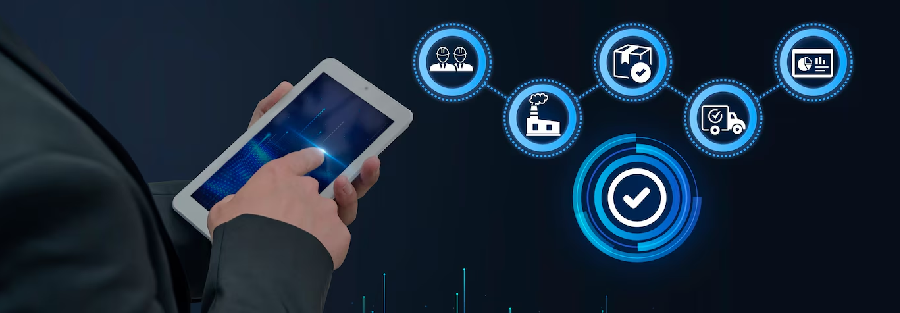The banking industry is rapidly evolving, and IoT in banking is at the center of this transformation. By leveraging interconnected devices, AI, and real-time analytics, banks can enhance security, improve efficiency, and deliver a better customer experience.
A study by MarketsandMarkets forecasts that the IoT in the banking sector will grow at a CAGR of 20-25% by 2030, driven by increasing security concerns, digitalization, and customer demand for seamless banking experiences.
Banks are increasingly deploying IoT-based ATM security, smart surveillance systems, and automated access control to combat fraud and ensure customer safety. In this blog, we will explore how IoT in banking enhances security, its benefits of IoT in banking, challenges, and future trends.
How IoT in Banking Enhances Premise Security
1. Real-Time Monitoring of Bank Premises
Traditional bank security relied heavily on manual surveillance, which was inefficient and prone to human error. Today, IoT in banking enables:
- AI-powered surveillance cameras that track movements and detect anomalies
- Smart locks and biometric access systems for vaults and sensitive areas
- Real-time alerts for unauthorized access or suspicious activity
2. IoT-Based ATM Security
ATMs are frequent targets for skimming, tampering, and theft. IoT-based ATM security has revolutionized how banks protect these machines:
- Facial Recognition & Biometric Authentication: Ensures only authorized users access ATM services.
- Tamper Detection Sensors: Immediately alert banks if an ATM is being tampered with.
- AI-based Video Surveillance: Monitors customer behavior and flags suspicious activities.
3. Smart Surveillance & AI-Powered Security Systems
IoT in the banking sector integrates:
- AI-driven facial recognition cameras to detect known fraudsters
- License Plate Recognition (LPR) systems to monitor suspicious vehicles
- Bank Surveillance System for centralized monitoring and quick response
Benefits of IoT in banking
1. Increased Security & Fraud Prevention
One of the biggest benefits of IoT in banking is proactive fraud detection. AI and IoT-enabled access controls ensure that only authorized personnel enter sensitive areas.
Example: A leading European bank implemented IoT-enabled vault security that locks down automatically if suspicious activity is detected.
2. Improved Customer Experience
- IoT-powered chatbots reduce wAIt times for banking queries
- Automated branch services enhance efficiency
- Smart banking apps help customers track transactions in real-time
3. Real-Time Data Analytics for Risk Assessment
Banks analyze real-time IoT in banking data to:
- Identify fraud attempts before they occur
- Monitor cash withdrawal patterns for anomalies
- Predict security threats using AI-driven analytics
4. Cost Reduction in Physical Security Infrastructure
By implementing IoT in banking, institutions reduce their dependency on physical security guards. AI-powered Bank Surveillance Systems significantly cut operational costs.
5. Compliance with Regulatory Frameworks
With the rise of financial crime, governments enforce strict security regulations. IoT in the banking sector helps banks comply with:
- Data privacy laws (GDPR, CCPA, RBI Regulations)
- Anti-money laundering (AML) guidelines
- Cybersecurity mandates
Challenges of Implementing IoT in Banking
1. Cybersecurity Risks
Hackers can exploit IoT vulnerabilities, leading to data breaches, identity theft, and financial fraud. Banks must invest in cybersecurity measures such as:
- End-to-end encryption for IoT communications
- Regular firmware updates for IoT devices
2. High Implementation Costs
IoT-based security systems require significant initial investment in:
- AI-powered surveillance
- Cloud storage for IoT data
- Network infrastructure upgrades
3. Data Privacy & Compliance Issues
Banks must handle large volumes of sensitive customer data, requiring:
- Strict data encryption policies
- Regulatory compliance with global security standards
4. Infrastructure Challenges
Legacy banking systems struggle with integrating modern IoT in banking solutions, requiring:
- IT infrastructure upgrades
- Training for staff on IoT security protocols
Future of IoT in the banking sector
1. AI-Powered Surveillance
Banks will adopt AI-driven predictive security analytics to detect fraud before it happens.
2. BlockchAIn Security & IoT Integration
Blockchain will secure banking transactions, ensuring tamper-proof data storage.
3. 5G-Enabled IoT Devices
5G will enhance IoT in banking sector adoption by enabling:
- Faster real-time security alerts
- Improved ATM security monitoring
4. Cashless Transactions & Automation
IoT will drive a cashless banking ecosystem with:
- Smart wearables for contactless payments
- Automated loan approvals using AI analytics
5. Market Growth & Predictions
Experts predict the IoT in banking sector will reach $30 billion by 2030, driven by:
- AI advancements
- Increased cybersecurity investments
Conclusion
The role of IoT in banking is revolutionizing security, automation, and fraud prevention. Banks can create a safer, smarter, and more efficient banking environment with IoT-based ATM security, AI-driven surveillance, and blockchain integration.
By adopting advanced IoT in banking sector solutions, banks can stay ahead in security while ensuring compliance with global cybersecurity standards.



